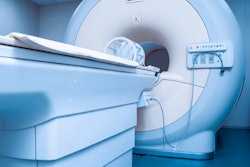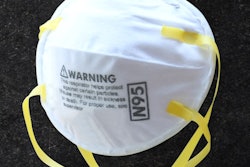Most MRI facilities in the Veterans Health Administration (VHA) maintain good MRI safety practices, but there is room for improvement, according to a report issued this week by the U.S. Department of Veterans Affairs.
The VA's Office of Healthcare Inspections (OHI) in the Office of Inspector General noted that most of the MRI sites in its survey observed the American College of Radiology's 2007 guidelines for MRI safety, even though the VHA has not mandated their use. However, inspectors found some shortcomings in MRI safety procedures and made several recommendations to improve safety practices.
The report said that the OHI began the investigations after an incident in June 2008 at a VHA facility, in which a patient crawled out of an MRI scanner after his calls for help were unanswered. Investigators found that the scanner's panic button was inoperable, and the facility had not performed routine maintenance checks of the MRI intercom system and panic button.
OHI investigators evaluated 50 MRI suites in 43 facilities from July 2009 to September 2010. The facilities represented a mix of size, affiliation, and geographic locations, and were from different Veterans Integrated Service Networks (VISNs).
The report found that all 43 facilities voluntarily endorsed the American College of Radiology (ACR) guidelines, and inspectors determined that they had implemented policies generally consistent with ACR policy. Employees were also able to verbalize appropriate safety and infection control practices.
The VA also reviewed employee training practices: Results showed that 72% of employees in their current positions for less than two years received training during orientation, while 89% of employees in their current positions for more than two years received annual training. The report recommends that all employees who enter the MRI suite receive initial and annual MRI safety training.
With respect to patient screening, investigators found that while VA guidelines require all patients to be screened before they enter the magnet room, screening forms are not required to be part of the medical record, and only 70% of facilities retained these forms. The report recommends that screening forms are retained in medical records, and that sites document their follow-up on patients with contraindications for MRI.
Finally, the report found high levels of compliance with VA rules requiring the marking of MRI entrances to indicate the presence of magnetic fields. However, physical barriers to prevent unauthorized access were only present at 80% of MRI sites, a level that could be improved, the report said.
VA MRI facilities should also improve their emergency preparedness by performing regular drills, testing and maintaining call systems, and completing risk assessments.
The report can be reached by clicking here.
By Brian Casey
AuntMinnie.com staff writer
January 27, 2011
Related Reading
Colored wristbands solve MR safety problem at Mayo Clinic, January 17, 2011
Rise in MRI accident highlights need for magnet safety, August 11, 2009
Survey: MRI centers lack infection control, May 28, 2009
Joint Commission may survey for MRI safety, March 5, 2009
Copyright © 2011 AuntMinnie.com



.fFmgij6Hin.png?auto=compress%2Cformat&fit=crop&h=100&q=70&w=100)




.fFmgij6Hin.png?auto=compress%2Cformat&fit=crop&h=167&q=70&w=250)











